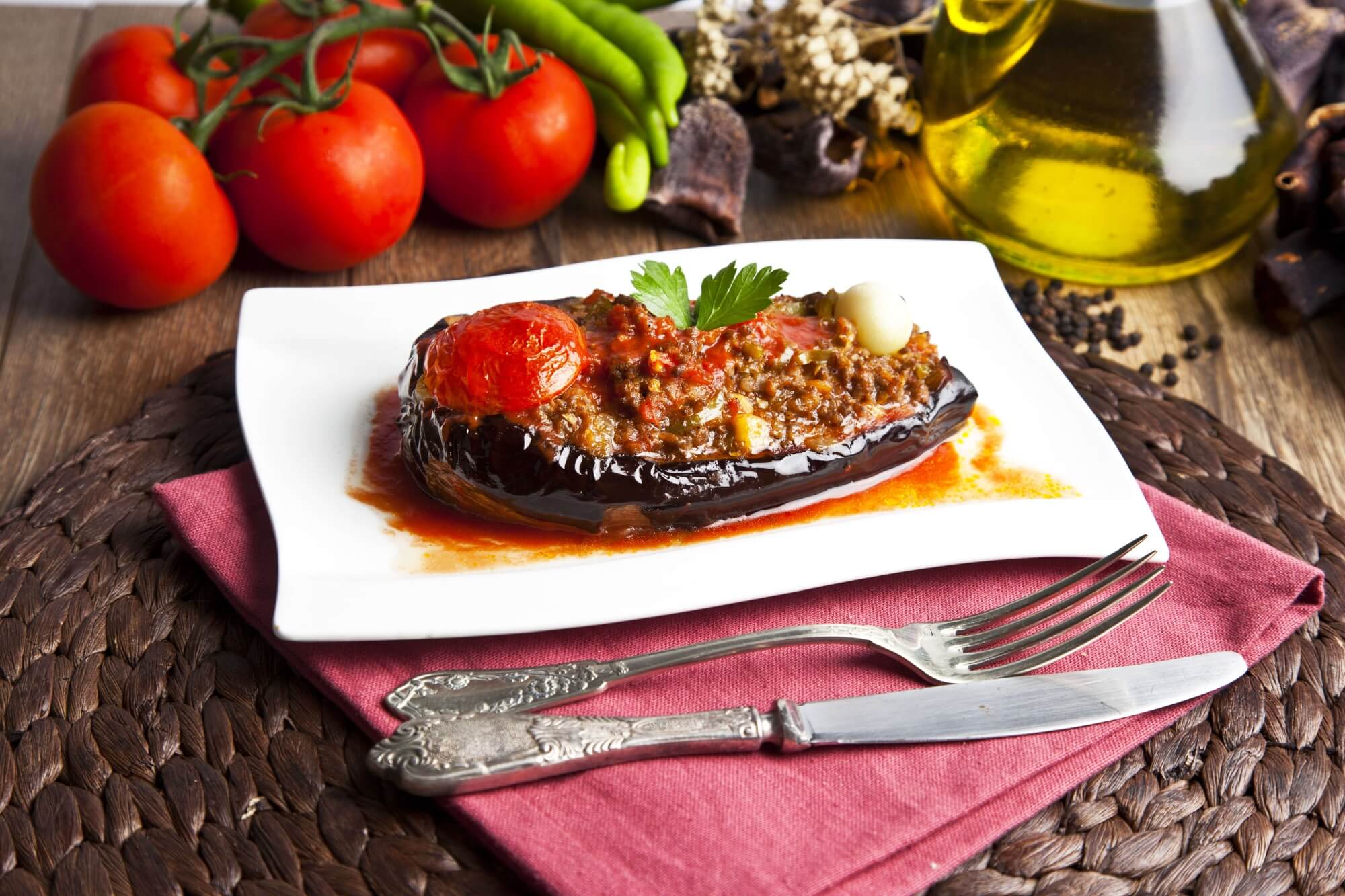
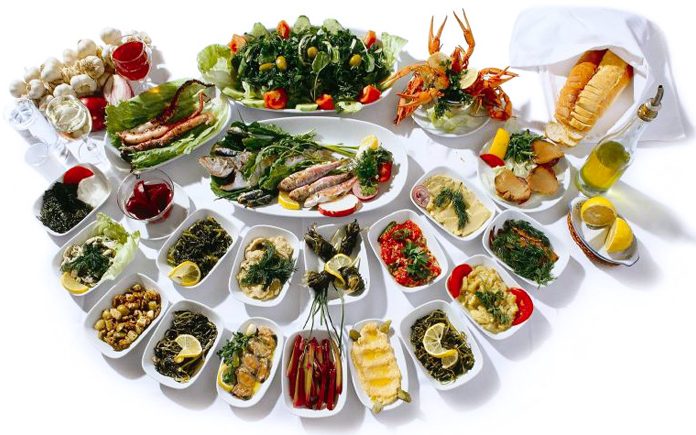
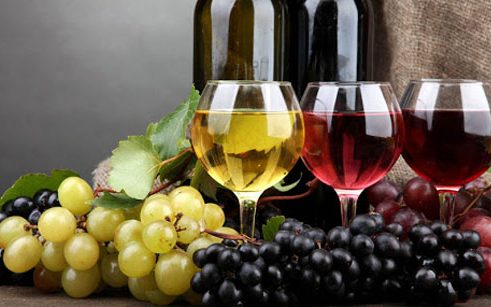
Foods
The range of food and restaurants on offer in North Cyprus, especially in and around Girne, is enormous, from Turkish Cypriot cuisine to Chinese, Indian, Italian and French. For those who prefer home favourites, ‘British’ food is very widely available in the Girne area. You can snack on a doner kebab from a street stall or savour dinner at a chic restaurant that can hold its own with top restaurants in Europe. Whichever cuisine you choose, the standards are generally very good, as is the value for money.
You can find the most types of cold and warm food in North Cyprus – various meze (selection of hot and cold appetisers), börek (hot pastries stuffed with spinach, cheese or meat), kebab, kofte (spiced meatballs), dolma (stuffed vine leaves) and salads that feature aubergines, tomatoes, onions, cucumbers, peppers (sometimes very hot), watercress, parsley, radishes and olives. Ordering a ‘full kebab’, which is available at many places, will result in a seemingly endless stream of delicious dishes being delivered to your table. Freshly caught fish and seafood are widely offered and include red and grey mullet, lobster, crab, mussels, bream, squid and sea bass. Fish is usually simply cooked, grilled or fried, though a few more sophisticated places offer it prepared in special sauces or as tasty casseroles. A fresh fish meze is a culinary highlight. Good-quality fresh fruit according to the season includes melons, cherries, apples, strawberries, bananas, figs, grapes, oranges, grapefruits and pears. Turkish delight is available in a variety of flavours, and those with walnuts or pistachios inside are especially delicious.
Drinks
Mineral water is available at a good price and nice quality and the usual range of fizzy drinks, as well as delicious Cyprus lemonade (made from mandarins and lemons). Ayran (yogurt drink) is cheap and also popular. On the alcoholic front, the Turkish EFES beer is very good.
In restaurants, ordering a bottle will not certainly bump up the bill too much. Of the mainland wines, those that are consistently the best are Kavaklidere and Doluca. Kavaklidere produce the red Yakut, the white Çankaya and rosé Lâl. Doluca produces the red and white Doluca and the more upmarket red Villa Doluca. Buzbag is another well-known brand.
The best cocktails and drinks you can find in many hotels and bars but one of the best is Brandy Sour, Cyprus’s signature cocktail, a combination of mild local brandy and lemon juice: do try one during your stay. Raki is the favored spirit, clear and aniseed-flavored, drunk either neat with ice or mixed with water when it turns cloudy, thus explaining its description as ‘lion’s milk’. It goes well with meze, fish, and lamb. The raki is one of the best here.
Turkish coffee is widely drunk, introduced here, as elsewhere in the eastern Mediterranean, by the Ottomans in the 15th century. It is drunk sade (without sugar), orta (medium sugar), or şekerli (heavily sugared).
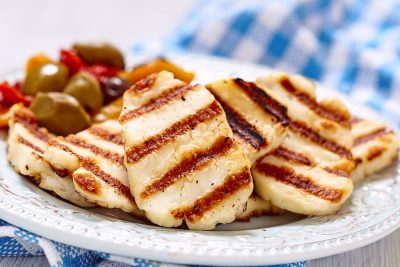
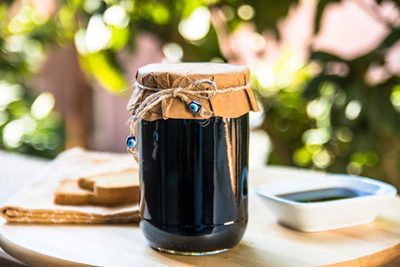
HELLIM
It is a traditional food that has been made for centuries in Cyprus and is well known for its unique taste throughout the world. An unripened brined cheese made with goat, sheep, and sometimes cow milk, Halloumi is a semi-hard, unripened cheese that is sometimes called Halloumi. As well as having a distinctive layered texture, it has a high melting point, which makes it an excellent meat substitute. It is moderately high in fat and high in protein. Hellim is usually enjoyed fresh, grilled, and barbecued with salads, sandwiches, meals, and even alongside fruit. Another favorite is grated on tubular pasta, sprinkled with dried mint, and cooked in a rich broth.
Pekmez
The Besparmak Mountains are swarming with carob trees and the sweet thick syrup which Cypriots extract from the pods is exceptionally tasty. Pekmez is used in soups and stews, spread on bread, poured over ice cream, mixed with yogurt, or trickled over pastry and fruit. At traditional restaurants, you will find mouth-watering desserts made of Pekmez, such as Gullurikya. In villages such as Tatlisu and Ozankoy which hold annual Carob Festivals, a sweet, fermented drink is also brewed with Pekmez and drank ice cold. Cypriots believe that a teaspoon a day of Pekmez keeps colds and flu away! The fruit of this tree contains vitamins A, B, B2, B3, and D, as well as zinc, useful for both children and adults suffering from anemia.
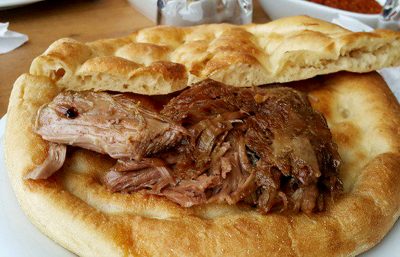
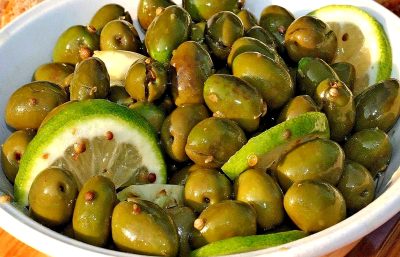
Kup Kebab
Also known as Kleftiko, lamb is marinated in olive oil, garlic, onions, and herbs and slowly cooked in greaseproof paper or foil, keeping all the juices and flavors together. Also referred to by locals as ‘Hirsiz Kebabı’ (Kebab of Thieves), traditionally, lambs or goats in the mountains were stolen from their flock and then cooked for hours in improvised underground ovens sealed with mud, to disguise the smell and smoke, avoiding detection. The success of this famous dish depends on slow roasting until the meat fairly falls off the bone. Almost always served with Cypriot roast potatoes, some prefer to cook the vegetables together with the meat, for the true flavor and aroma experience. Seasoned with oregano and bay leaves, a little acidity from a squeezed lemon helps to cut through the richness of the meat and potatoes.
Chakistes
These unique green olives are manually and onerously cracked using special stones. Olives have long been recognized as a symbol of good living and people tend to live longer and healthier lives in regions where their miraculous oil is a staple part of the diet.
A popular delicacy, Çakısdez (chuck-ess-dez), once picked, these olives are washed, cracked, and then soaked in brine. They are then served with coriander seeds, garlic, olive oil, and lemon, and complement any appetizer for lunch or dinner, although you will most likely find these rare olives at open buffets for breakfast as well.
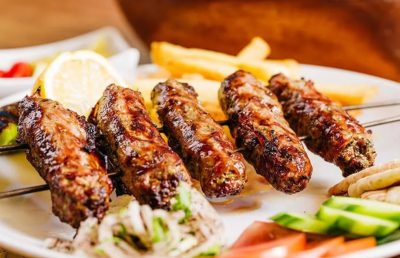
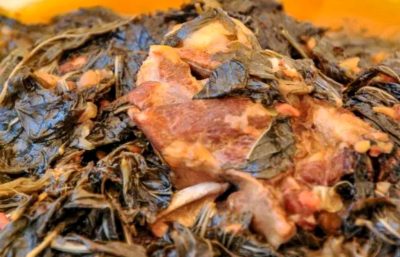
Seftali Kebab
No visit to NCY can be complete for non-vegetarians without trying this traditional feast. Seftali (shef-ta-lee)is a type of crépinette, a sausage without skin, that uses caul fat, or omentum, the membrane that surrounds the stomach of a lamb, to wrap the ingredients together. The filling is made from lamb shoulder or leg, mixed with finely chopped onion and parsley, and seasoned with salt and pepper. By the time it is cooked and served, the outer layer of fat is melted away and reduced to a thin golden-brown layer. Seftali is commonly served on Cypriot pitta bread with salad and sometimes topped with Cacik, an appetizer, or sauce made from yogurt, cucumber, olive oil, and mint.
Molohiya
The leaves of Corchorus Olitorius, commonly known as Jew’s mallow, Nalta jute, or Tossa jute. Molohiya is indigenous to Cyprus and was originally found growing on the banks of the River Nile in Egypt, living proof of Egyptians' influence on Cyprus.
Cypriot folk pick and dry the local plant throughout the summer months. Carrying many health benefits, it is cooked with freshly chopped tomato, onions, garlic, lemon juice, lamb, or chicken, but can also be served vegetarian. Molohiya is a gorgeous traditional dish that is usually cooked and served at home.
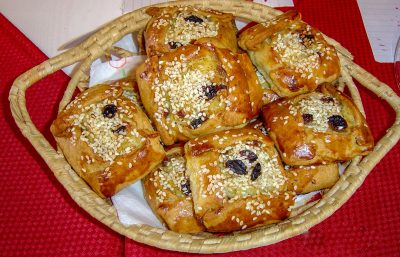
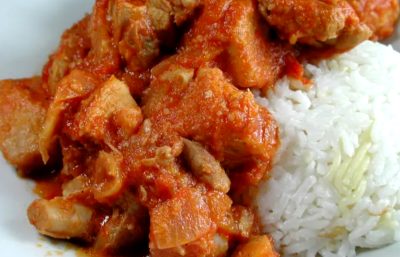
Pilavuna
One traditional savory bun is Pilavuna, a cheese-filled pastry unique to the island of North Cyprus. Made with a yeast pastry, comparable to bread dough which is rolled very thinly, the pastry is similar to pie crust in texture. They are filled with a combination of Hellim and nor, a fresh mild whey cheese produced in Cyprus, the cheeses are then mixed with aromatic dried mint and sometimes sweet sultanas. Sometimes also referred to as “flaounes” are traditionally served in Cyprus as a celebratory food.
KOLOKAS
Colocasia esculenta is a perennial, tropical plant primarily grown as a root vegetable for its edible, starchy corm. The vegetables cultivated in NCY are much larger than in other countries. Generally, Kolokas is eaten like a potato, as it tastes quite similar when cooked but with a nutty flavor. Care must be taken when handling the Kolokas, as the skin and roots are poisonous before they have been cooked and cannot under any circumstances be eaten raw. Often used as a substitute for potato, it is boiled in a tomato sauce or cooked with meat, beans, and chickpeas. However overseas it is common to roast, bake, mash, or chip them, as many different countries around the world use Kolokas in different ways.
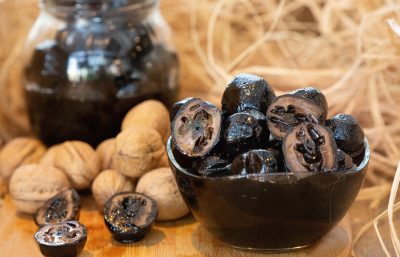
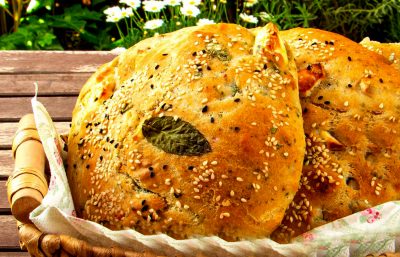
Ceviz Macun
A famous Cypriot fruit preserve of small green walnuts, this spoon sweet is a local favorite. Fruit preserves generally served on little plates or on miniature forks, are an inherent part of Cypriot culture, where they are offered to guests as an act of hospitality. Almost all fruits, nuts, and even vegetables can be made into a preserve. Ceviz Macun is made with unripe walnuts when they are green and tender, notably around the end of Spring or early summer when the inner shell is still soft. Served as a dessert at most local diners.
Hellimli
Hellimli is a traditional Cypriot savory pastry made with Hellim cheese. Consisting of flour, water, salt, butter, and olive oil, it is enriched by the addition of chopped onions, mint, and diced Hellim cheese. Kneading chunks of the Hellim cheese, onions, and mint into bread dough, the dough is then sprinkled with sesame and nigella seeds, before being baked in a traditional clay oven. The exterior of the bread develops a golden color, ready to be served. Visitors will come across many bakeries during their time in NCY and won’t be disappointed with the choice at hand.
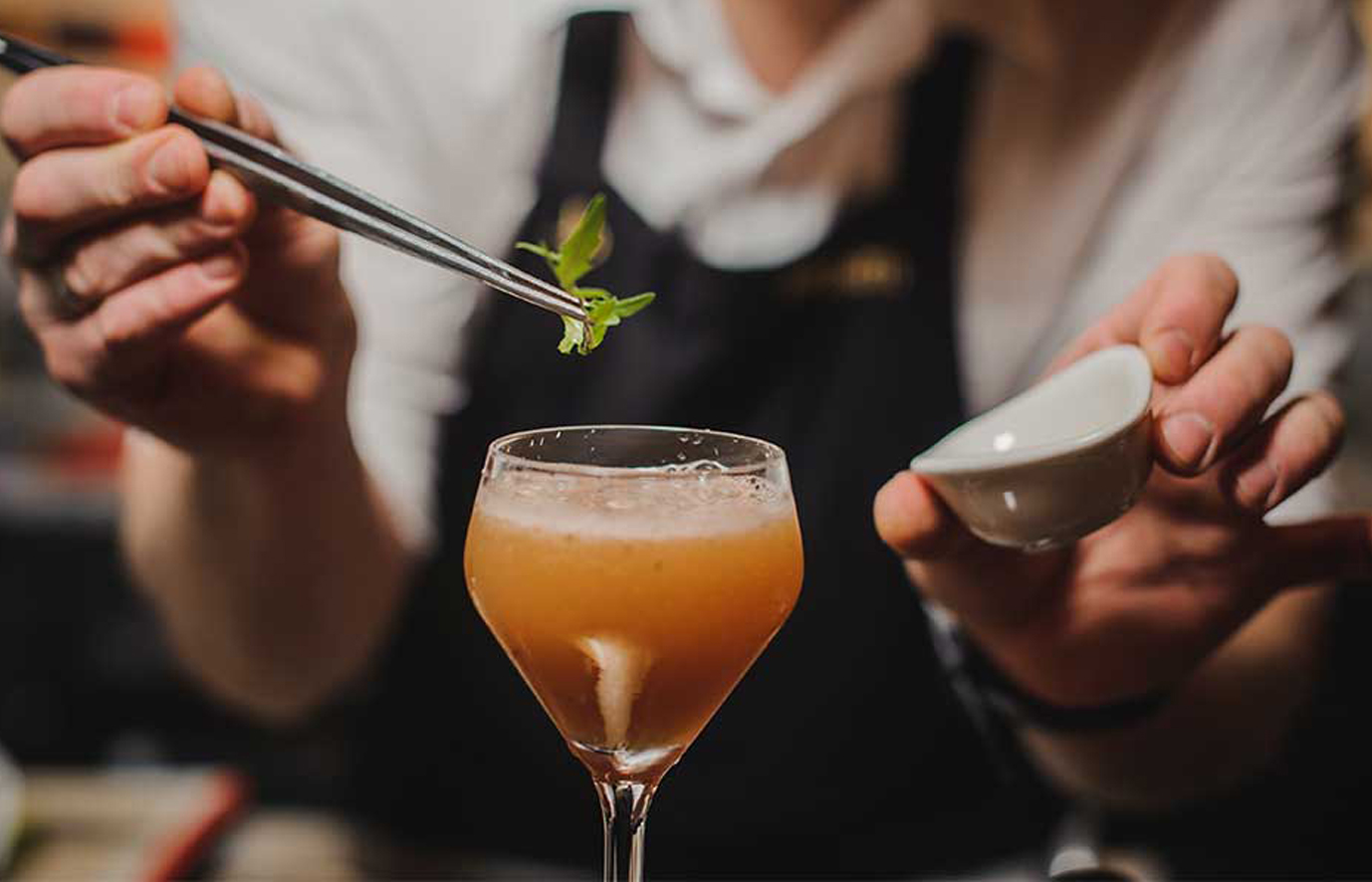
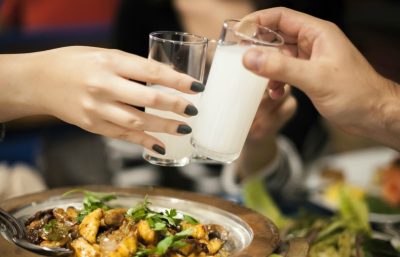
Brandy Sour
A mixture of brandy and cordial made from the most organic lemons of the Güzelyurt region, Brandy Sour is a local favorite. An exclusively Cypriot concoction, locals love their Brandy Sour which has come to be regarded as something of a national cocktail. The cocktail is made with Cypriot brandy which is milder than Cognac or Armagnac, lemons fresh or cordial, Angostura bitters, soda water, and ice. Bitter lemons are used locally to produce a bitter-sweet lemon cordial, which forms the sour and bitter base for the Brandy Sour cocktail the same lemons that were used by British author Lawrence Durrell, for the title of his autobiographical novel Bitter Lemons of Cyprus, written next to Bellapais Abbey in the 1950s. Although this drink is also enjoyed in other parts of the world, the Cypriot version is unique for the local brandy used as well as its unique initiation it was introduced in the 1930s in an old hotel in the Trodos Mountains, as an alcoholic substitute.
Raki
Meet raki, the anise-flavored drink Turkish Cypriots otherwise refer to as “Lion’s Milk”. Raki is made from different fruits in different regions, but grapes, figs, and plums are the main ones. The best way to drink raki is with flat cylindrical glasses and cold one can drink it with water, straight (sek), with soda or mineral water. As it is quite potent, usually 40% – 50% alcohol levels, it is usually diluted with water. Due to the anise it contains, raki changes color and becomes a milky white when water is added – a glass of pure water to clean the palette allows drinkers to better enjoy the distinct pleasant taste. If you clink glasses with fellow drinkers, clink with the bottom of your glass if you use the top it tells your companion that you think you are superior to them. Also another tradition, you may decide to knock the table lightly with the bottom of your glass before you take a sip, indicating that there is someone you are thinking of who you wish was there. Whether it’s a celebration or commiseration-spurred raki gathering, this drink and culture have a mysterious power to open up even the most reserved person.
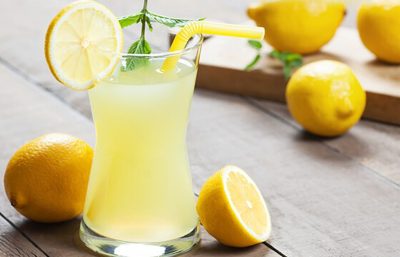

lemonade
Originally produced by local Cypriot women, this refreshing soft drink is made by blending the juice and rinds of citrus fruits such as oranges, mandarins, and lemons. In some regions, it is still kept in a cool room for up to a year before serving, so as to enhance the flavour. Occasionally mixed with water, this smooth sweet beverage is best-served ice cold for maximum refreshment.
Ayran
The perfect partner for your lahmacun has to be a refreshing glass of Aryan; a subtle blend of yogurt, water, and salt. Drenched over crushed ice and garnished with a mint leaf, it’s the ideal drink to quench your thirst. Try fresh Ayran (taze yapilmis Ayran) for the best experience.
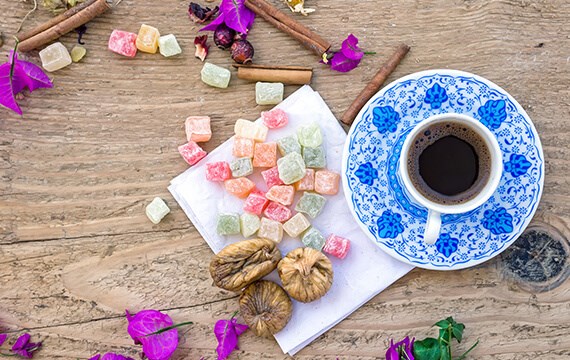

Turkish Coffee
North Cyprus holidays would not be complete without tasting this rich and smooth beverage. Roasted and finely ground beans are simmered and served in individual cups. This unique drink is an integral part of the country's cultural heritage. The grounds in the cup will tell your fortune if you are dining out with someone who has the gift! One thing they will see in your future is a return to Northern Cyprus.
Cyprus Wine
With a backdrop of sun-drenched soil, Northern Cyprus possesses the perfect climate for the production of fine wine. Indeed, the winemaking history of Cyprus dates back millennia, making it one of the oldest cultural heritages in Europe. Boutique wineries such as Chateau St. Hilarion have perfected their talents and can now boast a total of eleven different wines, including Merlot, Grenache, Semillon, and Chenin Blanc. So whether you opt for a glass, a carafe, or a bottle, no meal would be complete without the accompaniment of this fragrant nectar of Zeus.
